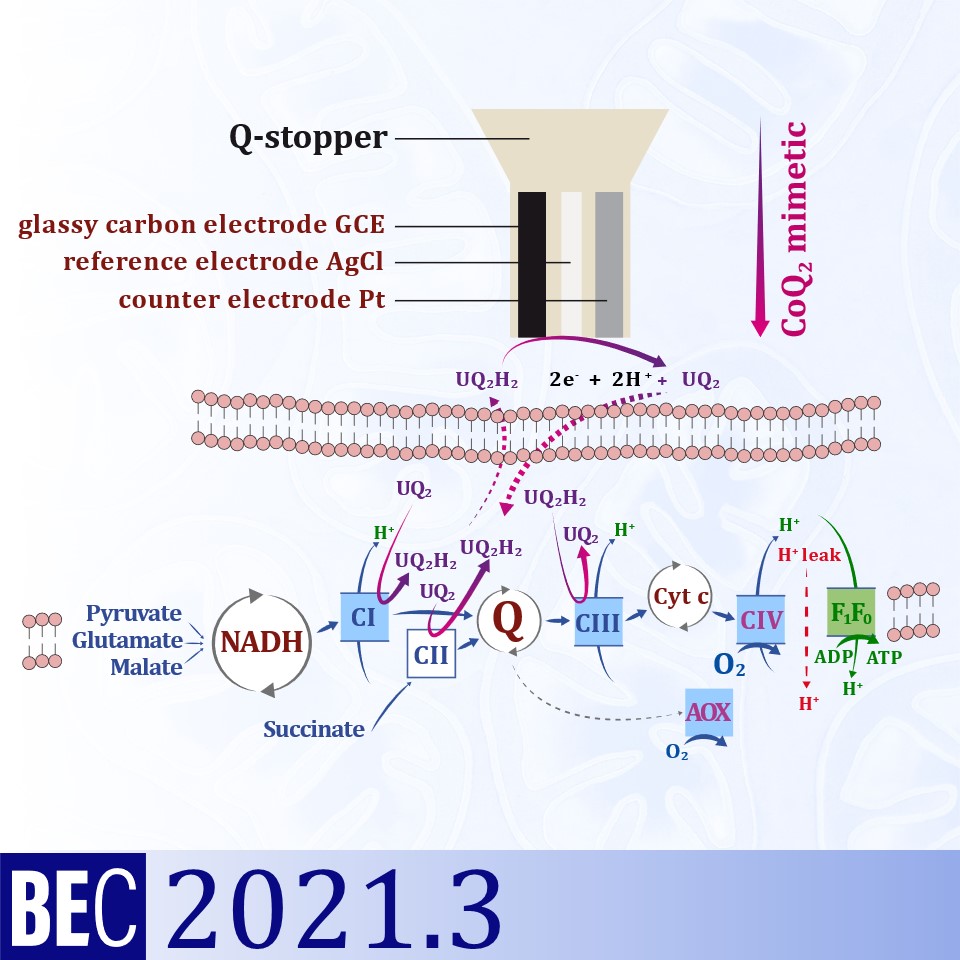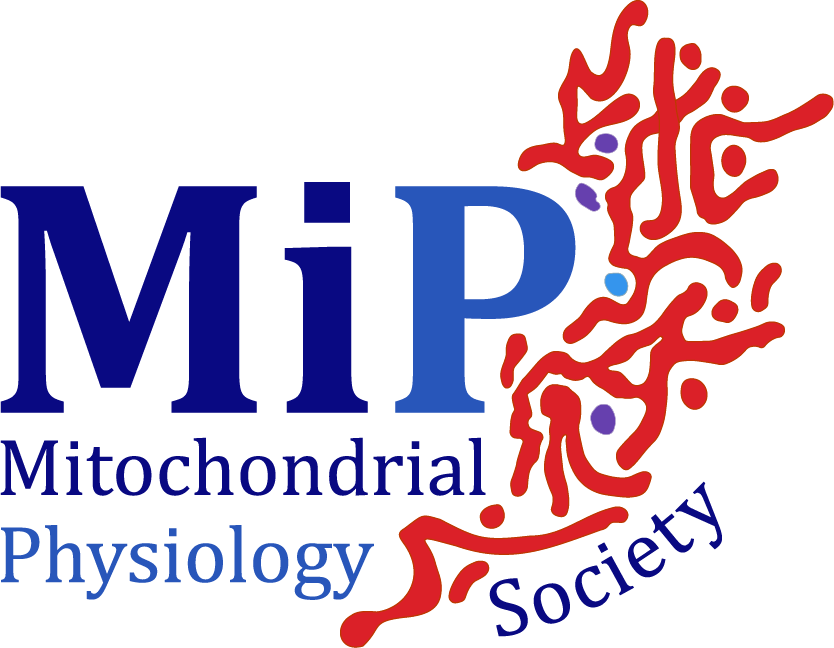Coupling and pathway control of coenzyme Q redox state and respiration in isolated mitochondria
DOI:
https://doi.org/10.26124/bec:2021-0003Keywords:
coenzyme Q, Q-junction, Q-redox state, electron transfer system, ETS-reactive Q-pool, mitochondrial coenzyme Q, supercomplexed Q, free Q-pool according to the fluid-state model, Qfree, cyclic voltammetry, CV, high-resolution respirometry, HRR, isolated mitochondria, imt, mouse heart mitochondria, mouse brain mitochondria, oxygen consumption, SUIT protocols, coupling control, pathway control, NS-pathway, additivityAbstract
Redox states of the mitochondrial coenzyme Q pool, which reacts with the electron transfer system, reflect the balance between (1) reducing capacities of electron flow from fuel substrates converging at the Q-junction, (2) oxidative capacities downstream of Q to O2, and (3) the load on the OXPHOS system utilizing or dissipating the protonmotive force.
A three-electrode sensor (Rich 1988; Moore et al 1988) was implemented into the NextGen-O2k to monitor continuously the redox state of CoQ2 added as a Q-mimetic simultaneously with O2 consumption. The Q-Module was optimized for high signal-to-noise ratio, minimum drift, and minimum oxygen diffusion. CoQ2 equilibrates in the same manner as Q at Complexes CI, CII and CIII. The CoQ2 redox state is monitored amperometrically with the working electrode, which is poised at CoQ2 redox peak potentials determined by cyclic voltammetry. The voltammogram also provides quality control of the Q-sensor and reveals chemical interferences.
The CoQ2 redox state and O2 consumption were measured simultaneously in isolated mouse cardiac and brain mitochondria. CoQ2 ― and by implication mitochondrial Q ― was more oxidized when O2 flux was stimulated by coupling control: when energy demand increased from LEAK to OXPHOS and electron transfer capacities in the succinate pathway. In contrast, CoQ2 was more reduced when O2 flux was stimulated by pathway-control of electron input capacities, increasing from the NADH (N)- to succinate (S)-linked pathway which converge at the Q-junction, with CI-Q-CIII and CII-Q-CIII segments, respectively. N- and S- respiratory pathway capacities were not completely additive, compatible with partitioning of Q intermediary between the solid-state and liquid-state models of supercomplex organization. The direct proportionality of CoQ2 reduction and electron input capacities through the CI-Q-CIII and CII-Q-CIII segments suggests that CoQ2 is accurately mimicking mitochondrial Q-redox changes.
Cite:
Komlódi T, Cardoso LHD, Doerrier C, Moore AL, Rich PR, Gnaiger E (2021) Coupling and pathway control of coenzyme Q redox state and respiration in isolated mitochondria. Bioenerg Commun 2021.3. https://doi.org/10.26124/bec:2021-0003

Downloads
Additional Files
Published
License
Copyright (c) 2021 Timea Komlodi, Luiza Helena Daltro Cardoso, Carolina Doerrier, Anthony L Moore, Peter R Rich, Erich Gnaiger

This work is licensed under a Creative Commons Attribution-NonCommercial-NoDerivatives 4.0 International License.



